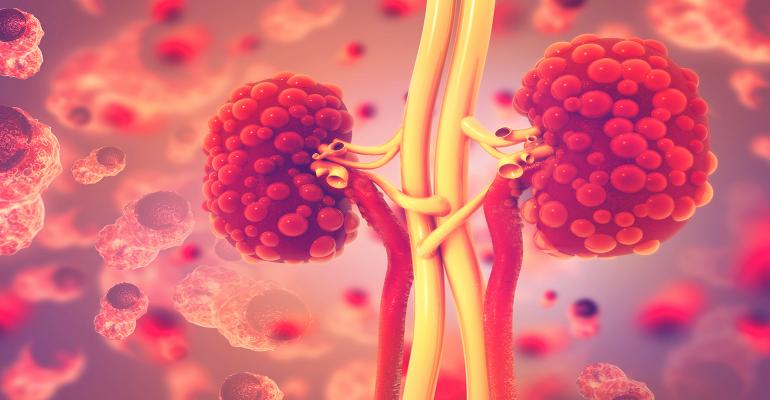Patients with large polycystic kidneys in need of a kidney transplant can have their diseased kidneys safely removed laparoscopically at the same time as their transplant surgery. That is the finding of a Mayo Clinic study recently published in the American Journal of Transplantation.
Mikel Prieto, M.D., a transplant surgeon and the study's senior author, began offering this dual laparoscopic procedure to polycystic kidney disease patients six years ago. The study results confirm that this all-in-one surgical approach is a safe and viable option for these patients.
"Some patients with polycystic kidney disease have two big problems. The first one is that their kidneys do not work and they need a kidney transplant. The other one is that they have very large kidneys that can cause pain and other problems," Dr. Prieto says. "If you fix one problem with the transplant, you still have the other problem to fix. It's very unsatisfying for patients who can be miserable with these kidneys to be told they will need to wait six months after the transplant to have them removed."
Polycystic kidney disease is an inherited disorder that causes clusters of cysts to develop primarily within the kidneys. As these fluid-filled cysts grow larger, they damage the kidneys, which can ultimately lead to kidney failure. These kidneys can sometimes reach a very large size significantly impairing a patient's quality of life. An estimated 600,000 people in the U.S. have polycystic kidney disease, according to the National Kidney Foundation.
The study compared the results of 51 transplant patients who had the dual surgery versus 97 patients who had only a living donor kidney transplant between January 2014 and October 2019. Researchers discovered that the kidney function for both groups of patients after undergoing surgery was the same. The risk of complications for both groups was also the same at 2%.
Patients who had the dual surgery needed to be hospitalized an average of four days post-surgery versus three days for those who had the kidney transplant alone. Researchers found that patients who had the dual surgery were more likely to need additional care immediately after the surgery. However, the long-term outcomes for both sets of patients were comparable.
"This study shows that the removal of both kidneys laparoscopically and a living donor transplant at the same time can be done successfully and safely without a significant effect on kidney function," Dr. Prieto says.


